What's New Under The Sun
Madison Historic Dial Returns
Monday, 13 October 2025 22:49
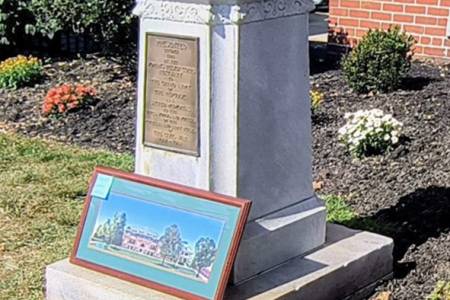 On October 4, 2025 Madison Historical Society of Ohio was able to have their sundial returned after 32 years, when in 1993 it was moved to the lawn of Lake County Courthouse to reduce the chance of vandalism. The sundial was originally placed at Madison Home 100 years ago on Saturday, October 24, 1925 during a conference of the Women's Relief Society. From 1904 to 1962 the state ran this...
On October 4, 2025 Madison Historical Society of Ohio was able to have their sundial returned after 32 years, when in 1993 it was moved to the lawn of Lake County Courthouse to reduce the chance of vandalism. The sundial was originally placed at Madison Home 100 years ago on Saturday, October 24, 1925 during a conference of the Women's Relief Society. From 1904 to 1962 the state ran this...
Elements of Dialing Course - 2025
Monday, 15 September 2025 19:42
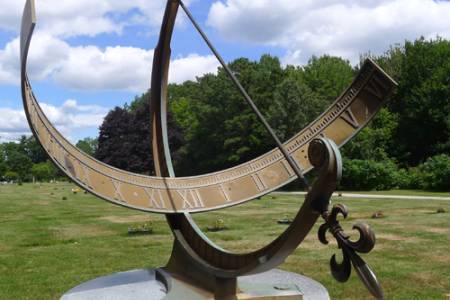 NASS is pleased to announce the upcoming fifth instance of Elements of Dialing, our introductory course about sundials, their history, and the science that makes them work. The free 12-lesson course, intended for those are new to sundialing, runs from 27 October 2025 until 26 April 2026. The course instructor is Robert Kellogg, NASS Vice President and Sundial Registrar. Bob will be...
NASS is pleased to announce the upcoming fifth instance of Elements of Dialing, our introductory course about sundials, their history, and the science that makes them work. The free 12-lesson course, intended for those are new to sundialing, runs from 27 October 2025 until 26 April 2026. The course instructor is Robert Kellogg, NASS Vice President and Sundial Registrar. Bob will be...
Sun Queen of World War II
Thursday, 11 September 2025 23:11
 A Hungarian born American scientist, Mária Telkes (1900-1995), was called "The Sun Queen" and among other honors, was postmousthly inducted into the National Inventors Hall of Fame. She lived to 95 and for most of her life developed solar power in a variety of forms.
Trained as a biophysicist, she worked for Westinghouse Electrical and Manufacturing Company in Pittsburgh, PA, where she...
A Hungarian born American scientist, Mária Telkes (1900-1995), was called "The Sun Queen" and among other honors, was postmousthly inducted into the National Inventors Hall of Fame. She lived to 95 and for most of her life developed solar power in a variety of forms.
Trained as a biophysicist, she worked for Westinghouse Electrical and Manufacturing Company in Pittsburgh, PA, where she...
2025 Conference -Ottawa
Thursday, 28 August 2025 23:25
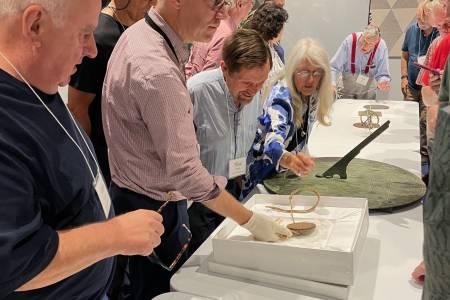 The annual NASS Conference was held 7-10 August, 2025 in Ottawa. As usual, the conference began late Thursday afternoon with an introduction social and a "grab bag give away", taking your chances with tickets to win the bag's prize. Will Grant was the final winner of the Walton Double Planar Polar Sundial, but Paul Ulbrich beat the statistic odds and won this prize three times,...
The annual NASS Conference was held 7-10 August, 2025 in Ottawa. As usual, the conference began late Thursday afternoon with an introduction social and a "grab bag give away", taking your chances with tickets to win the bag's prize. Will Grant was the final winner of the Walton Double Planar Polar Sundial, but Paul Ulbrich beat the statistic odds and won this prize three times,...
Prosciutto di Portici Sundial's Owner
Tuesday, 10 June 2025 18:51
 Prosciutto di Portici (Ham) Sundial
Photo: Getty Images
The Prosciutto di Portici Sundial, more often called the Portici Ham Sundial, dates from the first century somewhere between 8 BCE to 79 CE. This small silvered bronze dial was uncovered on 11 June, 1755 in the ruins of Herculaneum (current day Portici) in the "Villa of the Papyri", buried in...
Prosciutto di Portici (Ham) Sundial
Photo: Getty Images
The Prosciutto di Portici Sundial, more often called the Portici Ham Sundial, dates from the first century somewhere between 8 BCE to 79 CE. This small silvered bronze dial was uncovered on 11 June, 1755 in the ruins of Herculaneum (current day Portici) in the "Villa of the Papyri", buried in...
Hamilton Dial Dedicated
Friday, 06 June 2025 21:01
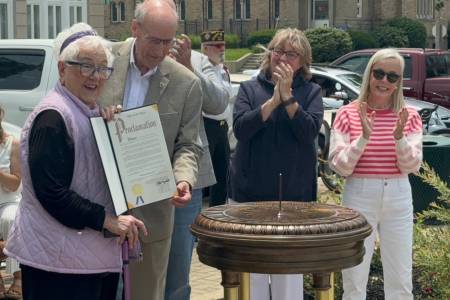 Sundial dedication May 31, 2025. At left is Kathleen Stuckey Fox, with the City Proclamation presented by Mayor Pat Moeller and City Council on-lookers Carla Fiehrer and Susan Vaughn offering congratulations.
On May 31, 2025 at 1pm, the Hamilton, Ohio, sundial (NASS Sundial Registry #1109) was re-dedicated in Monument Park. Originally dedicated in 1941 to the...
Sundial dedication May 31, 2025. At left is Kathleen Stuckey Fox, with the City Proclamation presented by Mayor Pat Moeller and City Council on-lookers Carla Fiehrer and Susan Vaughn offering congratulations.
On May 31, 2025 at 1pm, the Hamilton, Ohio, sundial (NASS Sundial Registry #1109) was re-dedicated in Monument Park. Originally dedicated in 1941 to the...
Frans Maes Received a Royal Decoration
Monday, 24 March 2025 21:33
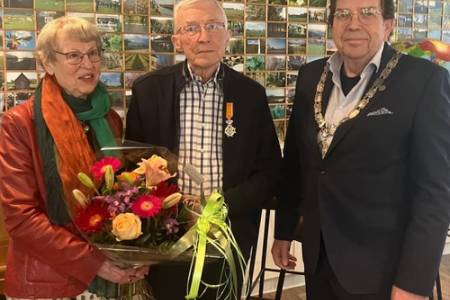 Several years ago Frans decided to write the course on sundials that included self assessment questions to force students not only to read the text, but to internalize the concepts. And a final submittal question "not necessarily a difficult question, but: no answer, no new lesson." Thus Frans Maes began writing lessons and sending them out to students.
NASS has now used his material to create...
Several years ago Frans decided to write the course on sundials that included self assessment questions to force students not only to read the text, but to internalize the concepts. And a final submittal question "not necessarily a difficult question, but: no answer, no new lesson." Thus Frans Maes began writing lessons and sending them out to students.
NASS has now used his material to create...
Pros and Cons of Daylight Savings Time
Monday, 24 March 2025 15:37
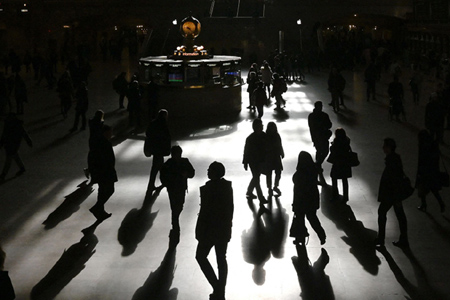 In a 24 March 2025 article from the on-line Science Advisor (American Association for the Advancement of Science) Phie Jacobs summarizes the "great debate" of the yearly shift from standard time to daylight savings time. In January 2025 the US Senate introduced the Sunshine Protection Act to permanently have daylight savings time year round. Certainly 54% of Americans do not like the...
In a 24 March 2025 article from the on-line Science Advisor (American Association for the Advancement of Science) Phie Jacobs summarizes the "great debate" of the yearly shift from standard time to daylight savings time. In January 2025 the US Senate introduced the Sunshine Protection Act to permanently have daylight savings time year round. Certainly 54% of Americans do not like the...
Native American Moon Alignment Ring
Friday, 21 March 2025 19:26
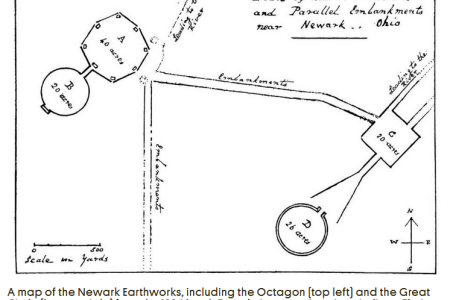 Perhaps the most famous alignment circle in the United States is the Cahokia Woodhenge near St. Louis constructed between 700-1400 CE by Cahokia Indigenous native Americans. But there were an estimated 10,000 other earthen mounds that once were scatter across the mid-west..
In an article from Atlas Obscura (https://www.atlasobscura.com/articles/octagon-earthworks-ohio) by Olivia Young on March...
Perhaps the most famous alignment circle in the United States is the Cahokia Woodhenge near St. Louis constructed between 700-1400 CE by Cahokia Indigenous native Americans. But there were an estimated 10,000 other earthen mounds that once were scatter across the mid-west..
In an article from Atlas Obscura (https://www.atlasobscura.com/articles/octagon-earthworks-ohio) by Olivia Young on March...
Hamilton Dial under Restoration
Friday, 21 March 2025 18:37
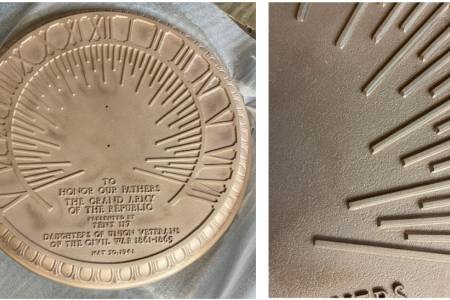 The Hamilton dial is in the restorative care of Jarrett and Celene Hawkins (Hawkins & Hawkins Custom, LLC in Cincinnati Ohio https://www.studio-hawkins.com/) in preparation for the dial's dedication on Saturday, May 31, 2025.
The face of the Hamilton Grand Army of the Republic (GAR) sundial has been cleaned and bead-blasted showing the dial as it was cast 84 years ago. In the process,...
The Hamilton dial is in the restorative care of Jarrett and Celene Hawkins (Hawkins & Hawkins Custom, LLC in Cincinnati Ohio https://www.studio-hawkins.com/) in preparation for the dial's dedication on Saturday, May 31, 2025.
The face of the Hamilton Grand Army of the Republic (GAR) sundial has been cleaned and bead-blasted showing the dial as it was cast 84 years ago. In the process,...
VSSC Space Museum gets Polar Sundial
Tuesday, 17 December 2024 23:47
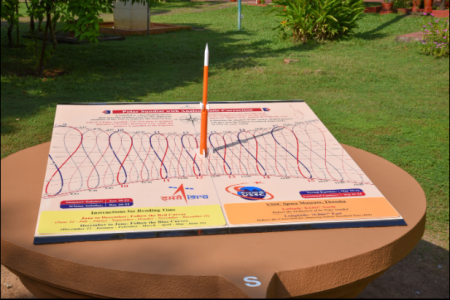 In November 2024, a team consisting of members from SPL, TTDG and CMD of VSSC successfully designed and installed an accurate and fully functional sundial at the Rocket Garden of VSSC Space Museum, Thumba (8.53°N, 76.86°E). Following a space theme, the vertical gnomon is a 3-stage rocket that casts its daily and seasonal shadow on a dial face 1 1/2 meters by 1 meter. The the sundial face...
In November 2024, a team consisting of members from SPL, TTDG and CMD of VSSC successfully designed and installed an accurate and fully functional sundial at the Rocket Garden of VSSC Space Museum, Thumba (8.53°N, 76.86°E). Following a space theme, the vertical gnomon is a 3-stage rocket that casts its daily and seasonal shadow on a dial face 1 1/2 meters by 1 meter. The the sundial face...
Historic Sundials of Andalusia
Saturday, 16 November 2024 00:07
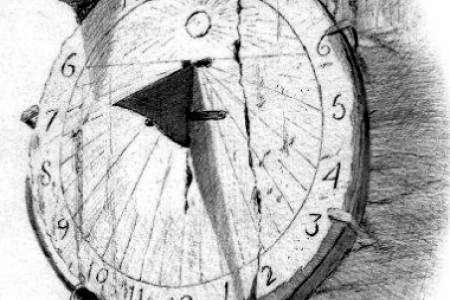 Esteban Martínez Almirón has published a new book Historical Sundials: Forgotten Andalusian Treasures (Relojes de Sol Históricos Tesoros Andaluces Olvidados) In it he reviews over 400 sundials from the Andalucian region of southern Spain Originally to celebrate the 25th year of the website https://relojandalusi.org/
Esteban Martínez Almirón began showing his sundial drawings on the site....
Esteban Martínez Almirón has published a new book Historical Sundials: Forgotten Andalusian Treasures (Relojes de Sol Históricos Tesoros Andaluces Olvidados) In it he reviews over 400 sundials from the Andalucian region of southern Spain Originally to celebrate the 25th year of the website https://relojandalusi.org/
Esteban Martínez Almirón began showing his sundial drawings on the site....
Sunlight and the 1918 Spanish Flu
- Details
- Hits: 15233
.jpeg) 1918 Photo of Camp Brooks Open-Air Hospital Boston - Nat'l Archives 1918 Photo of Camp Brooks Open-Air Hospital Boston - Nat'l Archives |
We feel the menance of the Corona Virus (Covid-19) and the imposed social isolation. Although worse than the typical annual flu, the Corona Virus pales to the worldwide pandemic of the Spanish Flu (isolated as the H1N1 virus). What does this have to do with sunlight? I am indebted to Richard Hobday's well researched article:
Here is his paragraph on "Sunlight and Influenza Infection"
"Putting infected patients out in the sun may have helped because it inactivates the influenza virus.[7] It also kills bacteria that cause lung and other infections in hospitals.[8] During the First World War, military surgeons routinely used sunlight to heal infected wounds.[9] They knew it was a disinfectant. What they didn’t know is that one advantage of placing patients outside in the sun is they can synthesise vitamin D in their skin if sunlight is strong enough. This was not discovered until the 1920s. Low vitamin D levels are now linked to respiratory infections and may increase susceptibility to influenza.[10] Also, our body’s biological rhythms appear to influence how we resist infections.[11] New research suggests they can alter our inflammatory response to the flu virus.[12] As with vitamin D, at the time of the 1918 pandemic, the important part played by sunlight in synchronizing these rhythms was not known."
Stitch in Time
- Details
- Hits: 15735
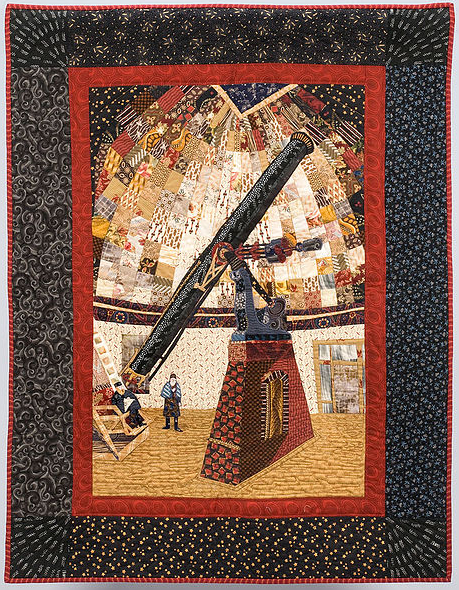 Sundials are often created at the instersection of science and art. Quilting has made its mark as well. For example in Burnsville North Carolina is the Quilt Block Sundial, painted in bright quilt blocks on a 8x8 foot board above the entrance to the Yancy Common Times Journal Building.
Sundials are often created at the instersection of science and art. Quilting has made its mark as well. For example in Burnsville North Carolina is the Quilt Block Sundial, painted in bright quilt blocks on a 8x8 foot board above the entrance to the Yancy Common Times Journal Building.
Now comes Altazimuth Arts, an enterprise established by Sara Schechner, well-know historian of science who is curator of Harvard's Collection of Historic Scientific Instruments. But Schechner is also active in the Studio Art Quilt Associates, Quilters' Connection of Watertown MA, and member of Quinobeguin Quilters guild. As she explains, "Recent quilts are inspired by history and the night sky, the built environment wet within nature, and by the many-faceted meanings of tangible things."
Illustrated is the US Naval Observatory 26-inch refractor made by Alvan Clark & Sons in 1873. "The inspiration for my quilt was an engraving from a newspaper story celebrating the work of the telescope. The print shows astronomer Simon Newcomb (at the eyepiece) and Superintendent Rear Admiral Benjamin F. Sands (standing) in the dome with the brand new telescope in late fall 1873. The engraving was based on a photograph of the same scene." Visit Schechner site at www.altazimutharts.com
Sundial as Functional Art
- Details
- Hits: 12034
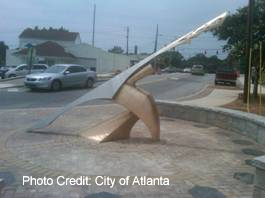 This weekend on October 6th a new sundial was dedicated in Atlanta, Georgia. Ayokunle Odeleye, nationally renowned artist, has created a modernistic bronze and stainless steel sundial called “Chi Wara Sundial Lantern.” The 8-foot tall sundial is accessible at ground level, sitting in a 20-foot circular plaza with hour marks at the circumference.
This weekend on October 6th a new sundial was dedicated in Atlanta, Georgia. Ayokunle Odeleye, nationally renowned artist, has created a modernistic bronze and stainless steel sundial called “Chi Wara Sundial Lantern.” The 8-foot tall sundial is accessible at ground level, sitting in a 20-foot circular plaza with hour marks at the circumference.
Interestingly, it functions as a sundial by day, but shines as a lantern by night. The public artwork honors twelve community leaders from Cascade Heights located in southwest Atlanta for their spiritual and cultural contributions to their community and Atlanta.
Odeleye’s sundial took inspiration from Mali folklore of West Africa and the headdress of Chi Wara, a mythical creature that is half-man and half-antelope. As noted by the city of Atlanta, the sundial represents “a headdress in special ceremonial harvest dance designed to pass on knowledge from the elders to young people in the viliage. Odeleye’s ‘Chi Wara Sundial Lantern’ interprets this mythological image and conceptually uses it to suggest the ceremonial passing of scholarship from Cascade elders to the youth of this community."
Reference: Saporta Report - David Pendered - Oct 3, 2012
Sun Queen of World War II
- Details
- Hits: 1099

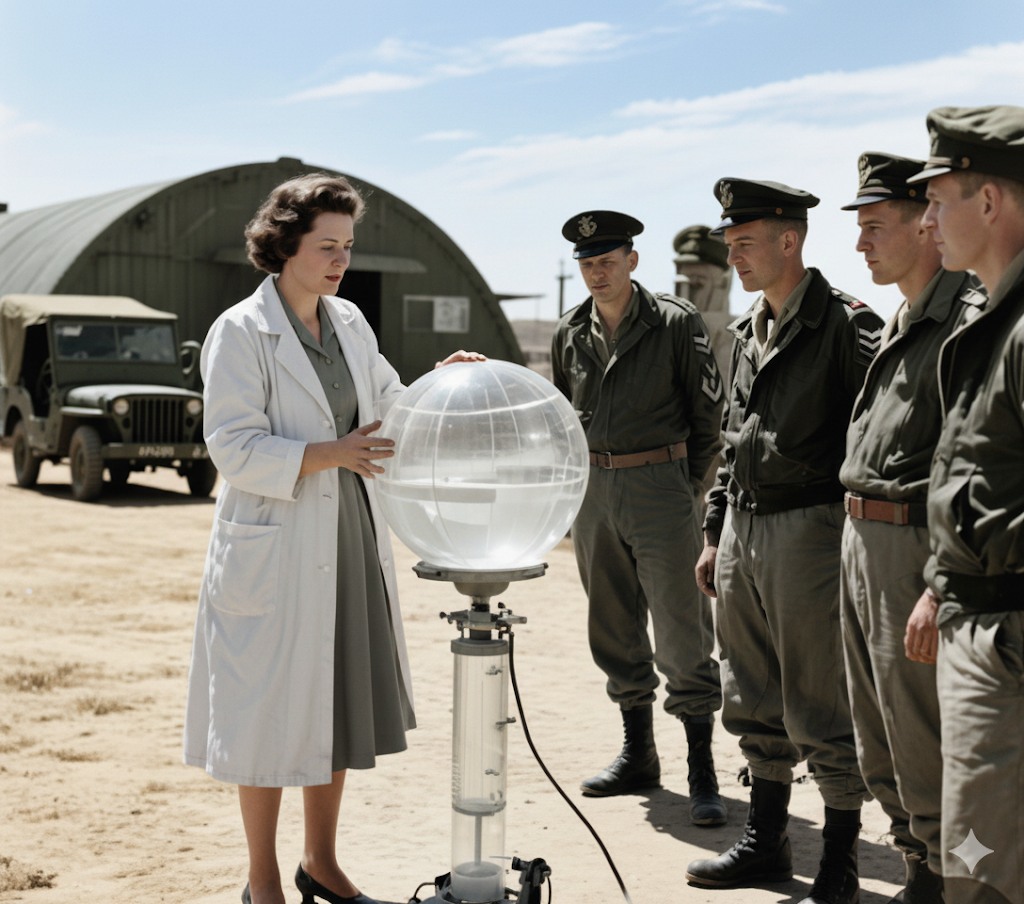 A Hungarian born American scientist, Mária Telkes (1900-1995), was called "The Sun Queen" and among other honors, was postmousthly inducted into the National Inventors Hall of Fame. She lived to 95 and for most of her life developed solar power in a variety of forms.
A Hungarian born American scientist, Mária Telkes (1900-1995), was called "The Sun Queen" and among other honors, was postmousthly inducted into the National Inventors Hall of Fame. She lived to 95 and for most of her life developed solar power in a variety of forms.
Trained as a biophysicist, she worked for Westinghouse Electrical and Manufacturing Company in Pittsburgh, PA, where she developed metal alloys for thermocouples to convert heat into electricity from 1937 to 1939. That changed her career. In 1939 whe joined the Massachusetts Institute of Technology (MIT) investigating solar conversion.
In 1948 she and architect Eleanor Raymond created one of the first solar-heated house, called the Dover Sun House, and exhibited at MIT in 1950 It had 18 glass panels on the roof to convert sunlight into heat, which then was transfer to 21 tons of sodium sulfate. As the salt turned to liquid, it stored the heat seven times more effective than water. Then, as the eutectic salt released heat, it re-crystalized. Very efficient which somehow has been lost in our electronic age.
Earlier effort she developed a simple, inflatable globe that could turn salty seawater into fresh, drinkable water. This invention was a simple evaporator and was included in military emergency kits. At WWII's, she received a Certificate of Merit in 1945 from the Office of Scientific Research and Development (OSRD).
In 1953 she created a solar oven for people, that even children, could use. It concentrated sunlight to bake small amounts of food. (Anyone remember their Girl Scout days making a solar oven? You can thank Mária Telkes!) Her work laid the foundation for many of today’s solar technologies, from residential heating systems to large-scale power generation. Over her career of more that 50 years, she received more than seven patents.
Read and watch:
https://www.invent.org/blog/inventors/maria-telkes-the-sun-queen
https://en.wikipedia.org/wiki/M%C3%A1ria_Telkes
https://www.youtube.com/watch?v=LVUCvR4QJSs
https://www.pbs.org/wgbh/americanexperience/films/sun-queen/
Frans Maes Received a Royal Decoration
- Details
- Hits: 2988
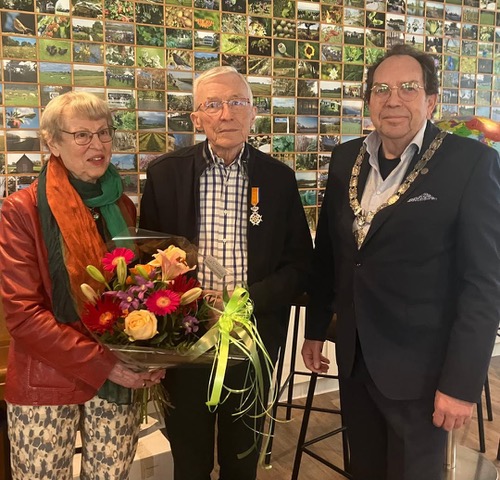 Several years ago Frans decided to write the course on sundials that included self assessment questions to force students not only to read the text, but to internalize the concepts. And a final submittal question "not necessarily a difficult question, but: no answer, no new lesson." Thus Frans Maes began writing lessons and sending them out to students.
Several years ago Frans decided to write the course on sundials that included self assessment questions to force students not only to read the text, but to internalize the concepts. And a final submittal question "not necessarily a difficult question, but: no answer, no new lesson." Thus Frans Maes began writing lessons and sending them out to students.
NASS has now used his material to create a similar course centered on North America, but still following the style of assessment questions and a final submitted question to proceed to the next lesson. Frans spark of educating people about sundials has gone international
In 2022 Frans was awarded the Sawyer Dialing Prize for his dedication to educating people about sundials. Frans received an award of 250 USD a custom made Spectra Sundial by Jim Tallman of Artisan Industrials.
NASS recently received an email from Hans Stikkelbroeck, former chairman Zonnewijzerkring (the Dutch Sundial Society): "Last Saturday (22 March 2025) Frans Maes received a Royal Decoration (Knight in the Order of Orange-Nassau) from the mayor of the municipality of West-Betuwe during the [Annual General Meeting] in Tricht. Partially due to your dedication and support, the king has awarded this distinction to Frans. For this, I would like to thank you, also on behalf of the members! Kind regards, Hans Stikkelbroeck"
Photo: Mrs. Maes, Mr. Frans Maes, Mayor of West-Betuwe, Netherlands
NASS Dialist Don Snyder Passes
- Details
- Hits: 7729
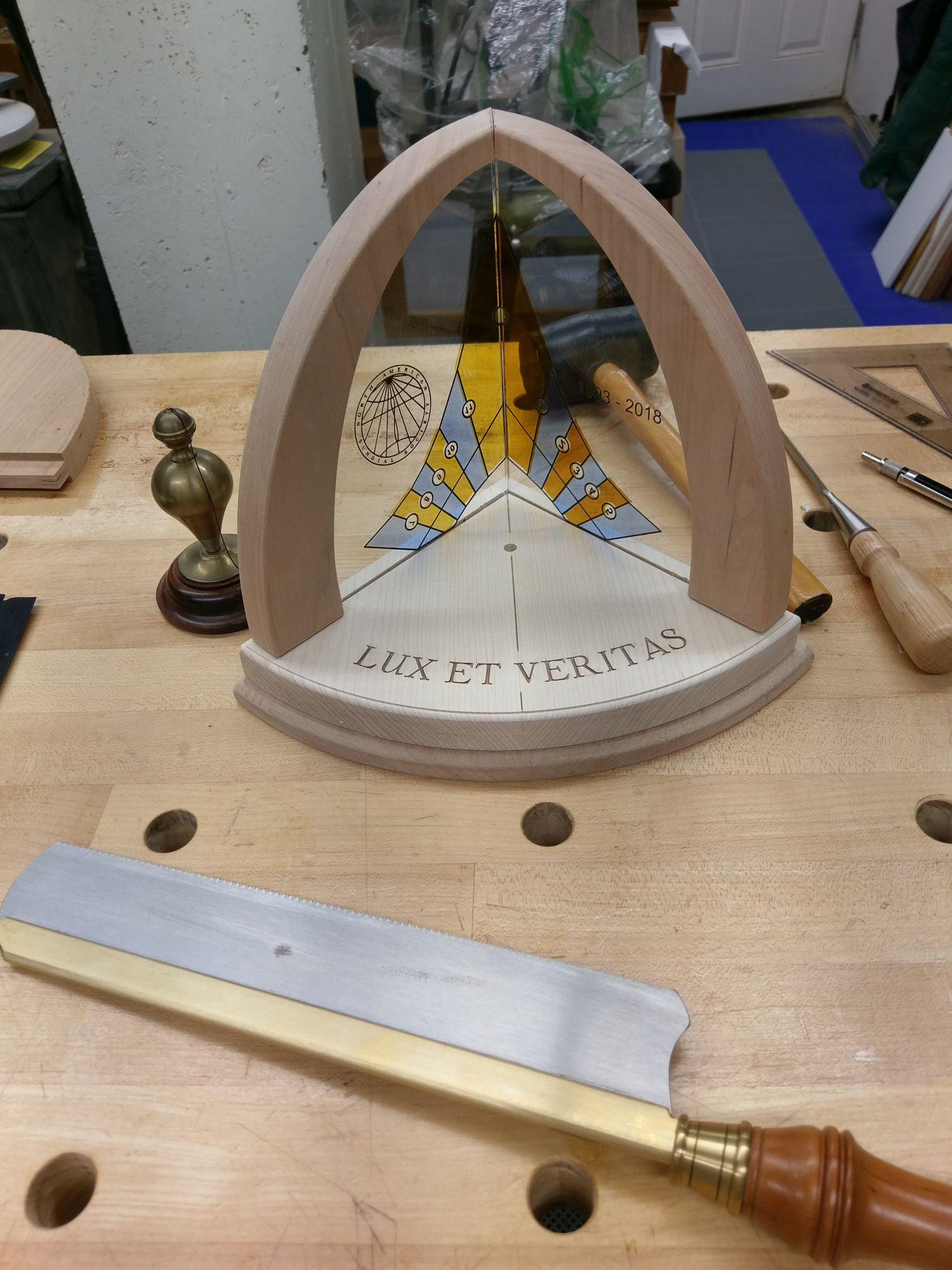 Don Snyder, long time NASS member, sundial designer and conference organizer, died Nov. 21, 2022 at the age of 87. He organized two St. Louis conferences for NASS in 2008 and 2017. For the first St. Louis conference, Don worked closely with Michael Olsen of the Missouri Botanical Garden to have five sundials available for viewing, including the dedication of a dial donated by Ron Rinehard, the Schmoyer sundial made by NASS member Bill Gottesman and donated to the Garden by Don and Bill, and in the Ottoman Garden, the Ottoman Sundial designed by NASS member Roger Bailey based on the 1845 dial at Topkapi Palace, Istanbul.
Don Snyder, long time NASS member, sundial designer and conference organizer, died Nov. 21, 2022 at the age of 87. He organized two St. Louis conferences for NASS in 2008 and 2017. For the first St. Louis conference, Don worked closely with Michael Olsen of the Missouri Botanical Garden to have five sundials available for viewing, including the dedication of a dial donated by Ron Rinehard, the Schmoyer sundial made by NASS member Bill Gottesman and donated to the Garden by Don and Bill, and in the Ottoman Garden, the Ottoman Sundial designed by NASS member Roger Bailey based on the 1845 dial at Topkapi Palace, Istanbul.
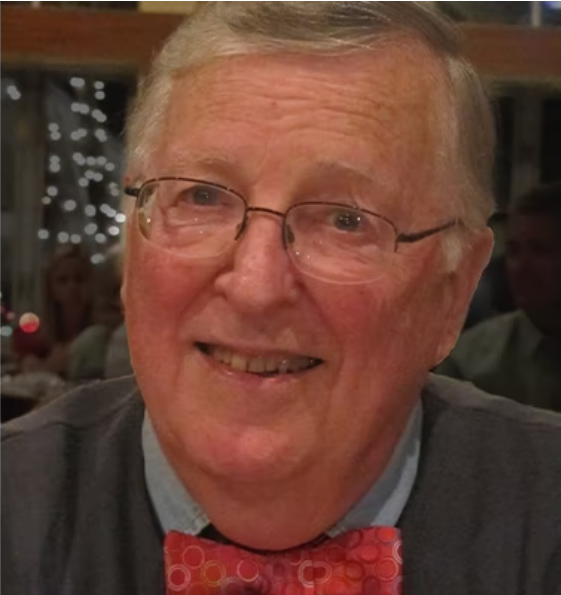 At the 2017 NASS conference in St. Louis, Don organized a ring-side seat at Jefferson Barracks to watch the total solar eclipse. Don worked with Perry County and Perryville, a town on the eclipse path, to create a new sundial for the courthouse gardens in honor of the eclipsing sun. Local craftspeople then created the dial following Don's design.
At the 2017 NASS conference in St. Louis, Don organized a ring-side seat at Jefferson Barracks to watch the total solar eclipse. Don worked with Perry County and Perryville, a town on the eclipse path, to create a new sundial for the courthouse gardens in honor of the eclipsing sun. Local craftspeople then created the dial following Don's design.
Don was always available to help other sundialists, offering advice and technical assistance. He helped restore a sundial at Concordia Seminary, established a Sundial Trail of dials around St. Louis, and for a decade checked the links on the NASS website for accuracy and relevance. With his hobby of woodworking, Don made a dial for the 25th anniversary of NASS (1993-2018) that projected solar time in colors on the dial face.
Don was a senior professor in the Department of Electrical Engineering at Washington University in St. Louis. He was the Samuel C. Sachs Professor of Electrical Engineering and chair of the department from 1976 to 1986 as well as a professor of radiology at the School of Medicine. As the founding director of the Electronic Systems and Signals Research Laboratory from 1986 to 1998 he tackled imagery problems in biomedicine, astronomy and remote sensing. In the Washington University Newsletter, they noted that when the Hubble space telescope was launched and had a blurry focal plane, Don proposed a novel image reconstruction approach. A version of this sharpening algorithm has been used on all subsequent images.
https://www.legacy.com/us/obituaries/name/donald-snyder-obituary?id=38326477
https://engineering.wustl.edu/news/2022/Donald-Snyder-87-senior-professor-of-electrical-systems-engineering.html
Interview with Sasch Stephens
- Details
- Hits: 6535
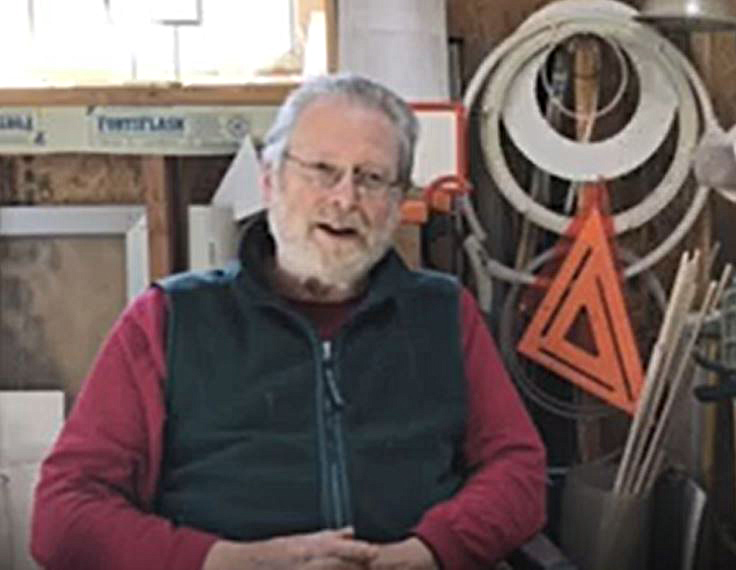 What makes a sundial? Practically anything. Sasch Stephens discusses how he became interested in dialing. Since then he has turned many objects into solar time devices. It takes some creative thinking to invision how a common object can become a working sundial. One of the most recent projects turned a 54 x 28 foot south side of a building it into a giant sundial mural in association with Allied Arts and the talents of artist Gretchen Leggitt. The dial was dedicated on September 22, 2018. View his interview at https://sundials.org/index.php/videos/making-and-using-sundials
What makes a sundial? Practically anything. Sasch Stephens discusses how he became interested in dialing. Since then he has turned many objects into solar time devices. It takes some creative thinking to invision how a common object can become a working sundial. One of the most recent projects turned a 54 x 28 foot south side of a building it into a giant sundial mural in association with Allied Arts and the talents of artist Gretchen Leggitt. The dial was dedicated on September 22, 2018. View his interview at https://sundials.org/index.php/videos/making-and-using-sundials
British Sundial Society Founder Christopher Daniel Passes
- Details
- Hits: 7484
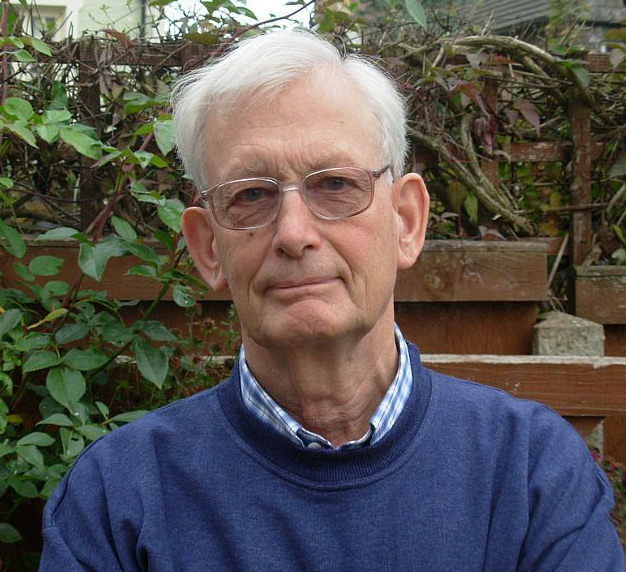 NASS is saddened to report the passing of one of the UK’s pre-eminent sundial designer, Christopher St. J H Daniel who died on May 17, 2022. His works are to be found all over the UK, ranging from private commissions to major public works and to restorations and reconstruction of old and damaged sundials.
NASS is saddened to report the passing of one of the UK’s pre-eminent sundial designer, Christopher St. J H Daniel who died on May 17, 2022. His works are to be found all over the UK, ranging from private commissions to major public works and to restorations and reconstruction of old and damaged sundials.
After a 13-year career at sea, Christopher Daniel joined the staff of the National Maritime Museum at Greenwich in 1964, working in the Department of Navigation & Astronomy. From 1967 onwards, his early curatorial responsibilities encouraged him to make a particular study of sundials and dialing literature. Christopher designed the now well- known "dolphin" equinoctial mean-time sundial at Greenwich, celebrating the Queen’s Silver Jubilee in 1977. In 1989 he and three others founded the British Sundial Society. From 1990, Christopher served as its Chairman, and more recently as President. His expertise and artistry in sundial design will be missed.
Netherland Sundial Society Founder Passes
- Details
- Hits: 6730
 Frans Maes of the Netherland Sundial Society writes: "We deeply regret to inform you that Hans de Rijk, founding member in 1978 and honorary member of the Netherlands' Sundial Society, passed away on November 23, at the age of 95. He served in the Board of the Society for many years and wrote some 150 articles in its Bulletin. Among these were important contributions, such as a latitude independent sundial, and the family of equator projection dials. A more playful result of his creativity were 'postcard dials', which he used to design while waiting for his Chinese take-away dinner."
Frans Maes of the Netherland Sundial Society writes: "We deeply regret to inform you that Hans de Rijk, founding member in 1978 and honorary member of the Netherlands' Sundial Society, passed away on November 23, at the age of 95. He served in the Board of the Society for many years and wrote some 150 articles in its Bulletin. Among these were important contributions, such as a latitude independent sundial, and the family of equator projection dials. A more playful result of his creativity were 'postcard dials', which he used to design while waiting for his Chinese take-away dinner."
"Hans was a popularizer of mathematics and astronomy and wrote many books about these subjects, under the pseudonym Bruno Ernst. His motto was: "Nescius omnium curiosus sum", I don't know anything but I am anxious to know everything. His eagerness to learn was equalled by his striving and ability to teach. He has been a teacher of mathematics and physics, founded the mathematics magazine 'Pythagoras' and the physics magazine 'Archimedes', aimed at secondary school students. He founded the first public astronomical observatory in the Netherlands. He also founded the organization 'Ars et mathesis', where art and mathematics meet, and its magazine with the same name. He became friends with the famous Dutch artist Maurits Cornelis Escher and wrote several books about Escher's work. Later on, he wrote extensively about impossible figures."
"Planetoid 11245 bears his name.".
"We lose a generous, inspiring, modest and productive diallist and friend."
The Netherland Sundial Society web pages is available in English at: https://www.dezonnewijzerkring.nl/pages/en/welcome.php?lang=EN
